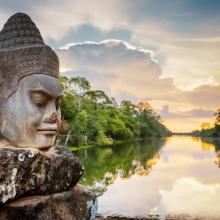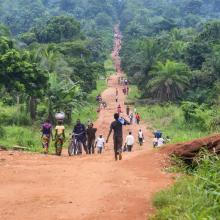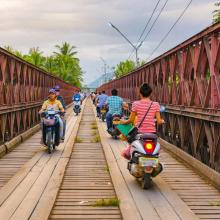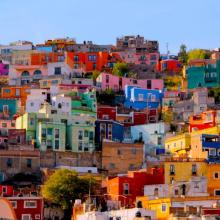Global Mission Partners are United Methodist-related ministries with which West Ohio has a partnership of mutual relationship and respect. West Ohio’s four Mission Partners generate an amazing number and variety of outreach ministries. Aviation ministries, clinics and hospitals, leadership development, home churches, youth programs, and children’s homes are just a few of the ministries our Partners are involved in. To learn more about these Partners, click on a country name below.

Cambodia
Located in Southeast Asia, between the countries of Thailand, Vietnam, and Laos, Cambodia has a population of more than 16 million people. With a tropical climate, the geography consists mainly of low, flat plains and is dominated by the Mekong River. The majority of the population is Buddhist and speaks the Khmer language. Angkor Wat, one of the world’s largest religious monuments, stands as a testament to the might of the Khmer Empire, which ruled over much of Southeast Asia from the 9th to the 15th centuries. One of the poorest countries in Asia, Cambodia has experienced economic growth in the past decade due to increases in tourism and mining industries. Currently, labor and sex trafficking are major concerns in Cambodia.

Congo
In the center of the African plateau, the Democratic Republic of Congo is the second largest country (by area) in Africa, with a population of more than 83 million. The official language of the Congo is French, having been colonized by the Belgians in 1908. The Republic of Congo gained its independence in 1960, but the subsequent years have been marred by multiple coups and civil wars. Half of all Congolese consider themselves Roman Catholic, followed by Protestant (20%), Kimbanguist (10%), and Muslim (10%). Sixty-three percent of the DRC’s population is under the poverty line, and despite its vast natural resources, the Congo’s economy continues to struggle. Refugees from other African nations, as well as internally displaced persons, are of great concern.

Laos
After arising from the ancient Lao kingdom of Lan Xang, for centuries Laos was dominated by one culture after another: Thailand, French Indochina, and later, Vietnam. Years of isolation resulted in an underdeveloped economy, but recent efforts toward privatization have led to renewed economic growth. One of the few remaining one-party communist states, Laos is located in Southeast Asia between Thailand and Vietnam with a population of more than 7 million. The official language is Lao, and the largest religion is Buddhism (64.7%), but a large portion of the population claim no religion at all (31.4%). More than 53 percent of the population is of Lao descent, yet the total number of ethnic groups is estimated at well over 200.

Mexico
The site of numerous Native civilizations, including the Aztec, Maya, and Zapotec, among others, Mexico was conquered by the Spanish in the early 1500s. Mexico won its independence from Spain in 1810, and in recent years has successfully held presidential elections. The 15th largest nation in the world by land mass, Mexico has a population of nearly 125 million people. Almost all residents of Mexico speak Spanish, and the vast majority (82.7%) are Roman Catholic. Mexico has a fairly strong economy with an increasing orientation toward manufacturing and trade with the U.S., although more than 47% of the population lives under the poverty level. Since the mid-2000’s, Mexico’s drug trafficking organizations have become increasingly violent, resulting in tens of thousands of deaths.
